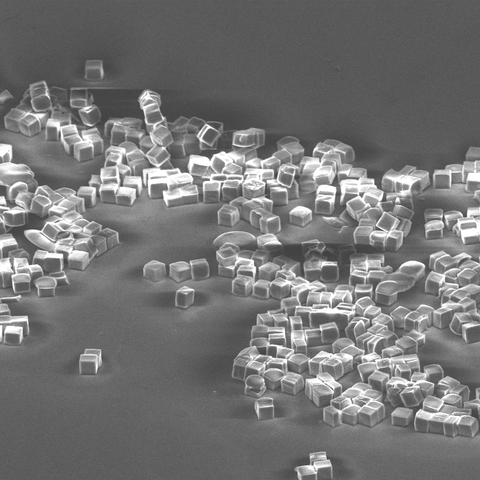
Forget ice cube trays … we have microscopic molds for any shape we want. Scientists at NIST can now pour a polymer liquid into a template to make exact shapes — each about 10 to 50 times smaller than the width of a human hair — and can pop it all out without defects. But why do this? Here are some uses that NIST’s Sam Oberdick and Gary Zabow foresee:
SELF-ASSEMBLY
Many things in nature — trees, insects, us — assemble themselves into unique and well-defined structures without any precise outside direction. Their properties — from the strength of a tree to the iridescence of butterfly wings — depend on those self-assembled structures. Scientists across disciplines are experimenting with different building blocks to create materials with the properties they want by nudging those building blocks to self-assemble into the desired structures. Self-assembly saves time because it can be quicker, cheaper and often much simpler to let materials form shapes on their own than it is to continually direct the structure into being.
But the quality of self-assembly is only as good as the consistency of the building blocks that make up the material. If one block is large and another is small or rounder, it can ruin the end result. That’s where this method comes into play, allowing researchers to cheaply and rapidly produce well-defined, identically shaped polymer microparticles for investigating self-assembly of differently shaped micro building blocks.
BIOSENSING
“Smart” polymers can morph into different shapes depending on chemical factors around them. If exposed to a high level of acidity (low pH), for example, they might shrink or expand. A polymer’s shape change, paired with its magnetic or optical properties, can transform the particles into sensors and help us identify pH levels inside a body. With NIST’s molding process, researchers can easily test the qualities of different well-defined polymer particles for such sensors.
DRUG DELIVERY
Since polymer particles are porous and absorbent, scientists can load them up with drugs or therapeutic agents that they can then release at a specific location in the body. This release process and the way in which the drug carrier interacts with its environment both depend on the shape and size of the particles they use. Now, researchers can quickly develop differently shaped particles and test how they might perform in a drug delivery task.
Curious about the process behind the polymer molds? Check out the recently published paper in ACS Applied Polymer Materials for more details.
Follow us on social media for more like this from all across NIST!

